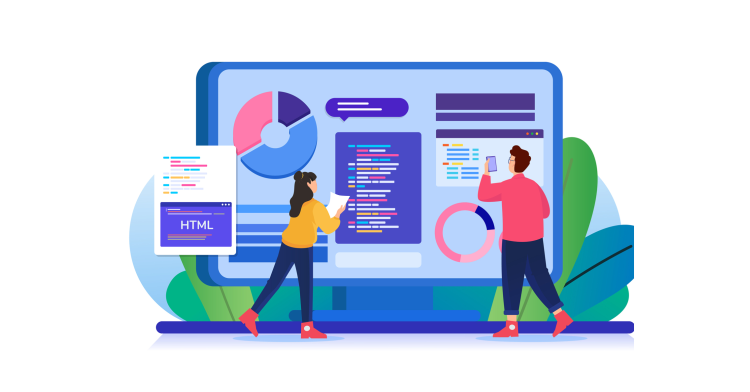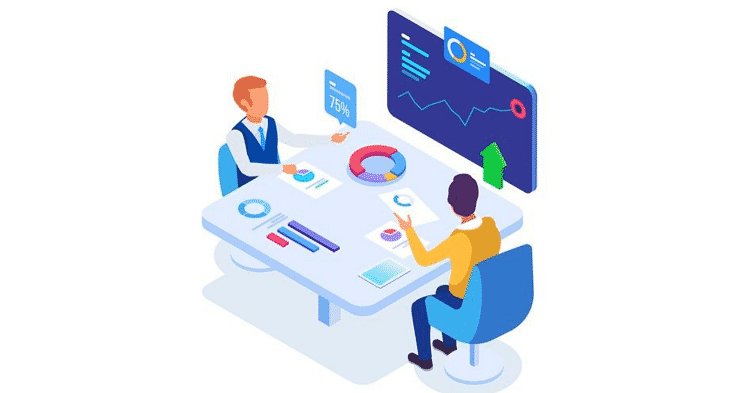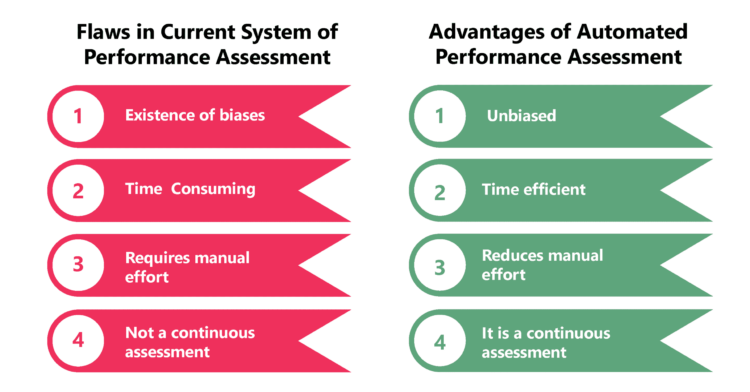1. Continuous Performance Appraisal: Automated systems use data from work tools to assess employee performance in real time, allowing immediate corrective actions instead of waiting for annual appraisals.
2. Reduction of Bias: Data-driven systems minimize human bias and errors in performance evaluations, making appraisals more objective and fair.
3. Increased Efficiency: Automated assessments drastically reduce the time spent on traditional performance cycles, boosting productivity and enabling quicker responses to business changes.
4. Tailored Interventions: Based on performance data, these systems suggest actions like training, role changes, or promotions, enhancing employee development and satisfaction.
April 20, 2018: Today is Judgement Day in Sparrow Solutions, and the annual performance appraisal ratings will be released.
For most employees, it’s the day when they receive rewards for their efforts throughout the year, including increments, bonuses, and promotions.
Employees may also fear termination due to underperformance.

Every year, most organizations ask the bottom 10% of employees to leave due to poor performance. It’s a tough call, but it is imperative.
The organization often needs to wait for a whole year to figure out that someone is underperforming based on the performance appraisal and then take action.

On the other hand, a high performer needs to wait the whole year to get his or her due.
The other big flaw is that qualitative performance appraisals leave room for biases.

Plus, most organizations spend an inordinate amount of time discussing and debating about performance ratings.
Add to that the time spent in collating and presenting the data. All of this hampers productivity and delays actual action.

All organizations have a big push to make data-driven decisions, even in people matters.
The big data approach to performance appraisals would cut down on manual effort, and reduce bias and cycle time.
Hence, we should focus on continuous performance appraisal and corrective actions.
As employees work, they leave a trail of data in work tools such as Project Management Systems, CRMs, ERPs, Attendance Systems, etc.

Automated performance management systems of the future will continuously monitor employee performance using data from these systems.
These systems will score the employee’s performance based on parameters linked to business results and suggest corrective actions.
Actions could range from recommending training and connecting with an expert to suggesting a change in the job profile.
It could also simply alert the reporting manager or HR.

The most significant advantage of such systems would be the continuous assessment of employee performance.
Corrective actions can be immediate, so there is no need to wait until the appraisal cycle.
The organization can initiate training, re-skilling, role enhancement (read as a promotion), or role change immediately.

The system will have predefined thresholds for each action. It will learn from past results of such interventions and tweak its algorithm to make its intervention more effective.
The system can also keep track of employee motivation and take corrective action before it starts affecting productivity.
In today’s business environment, every second counts. Keeping pace with business changes is the need of the hour.
Hence, such performance measurement and development systems can make employees and organizations more responsive to changes.

Data-driven real-time performance management systems will increase productivity, significantly impact business, and improve employee satisfaction.
These systems can cut down the time spent by the organization in a typical appraisal cycle drastically.
It can be especially beneficial for start-ups and small companies that must be highly responsive to the business environment.
However, they will always be short on HR resources to manage their people and performance.
Another advantage is that these systems remove supervisor bias and errors.
It might take some time before the system can speak out ‘You are promoted’ or ‘You are terminated’. However, we are going to see more intelligent learning systems for employee performance management very soon.

Lead author: Sagar Chaudhuri, the Co-Founder and CEO of HiFives. He is an HR Tech Evangelist with over 25 years of corporate and entrepreneurship experience. In the past, Sagar has held leadership roles at companies such as Genpact, Infosys, and ICICI Bank. He has an engineering degree from IIT Kharagpur and an MBA from IIM Lucknow. Connect on LinkedIn
To stay updated on the latest HiFives blogs, follow us on Twitter (@MyHiFives)